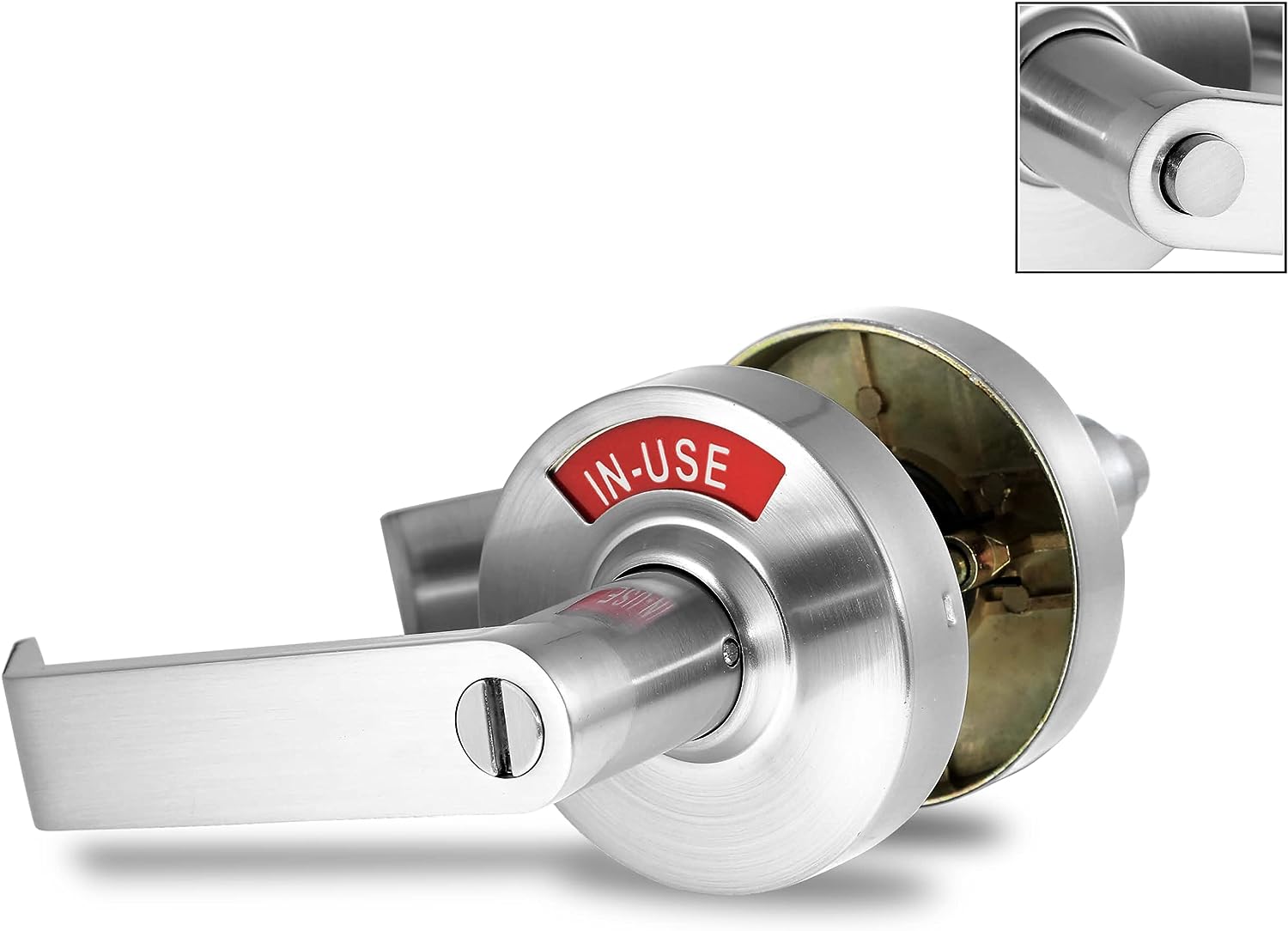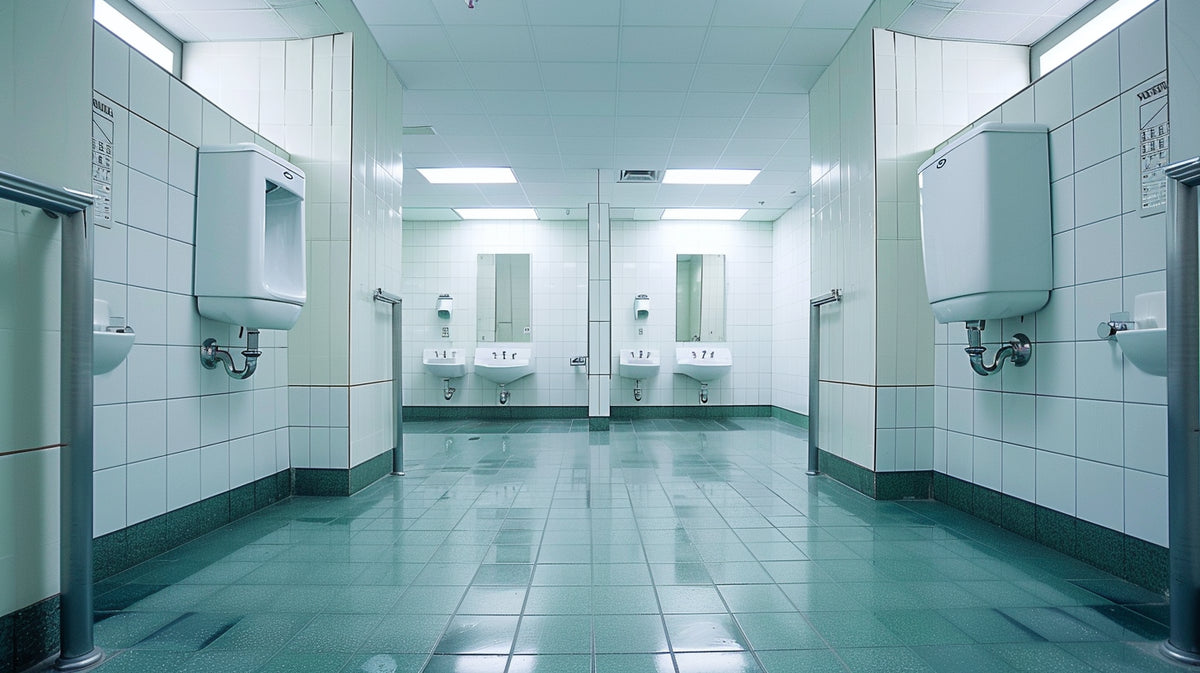
ADA compliant restrooms for restaurants are so important to ensure all guests are accommodated in an establishment. Maintaining compliance with these requirements ensures your customers will have a positive and comfortable experience when using your restrooms, while also ensuring your business meets ADA regulations.
In this article, we will discuss restroom requirements for restaurants, while also including information regarding ADA regulations, along with specific insight regarding toilet requirements.
Do restaurants have to have bathrooms?
Disabled toilet regulations in restaurants
Toilet regulations for restaurants to meet disability requirements apply to both men's and women’s restrooms. These laws state that restrooms must be accessible for wheelchairs. The plumbing code recommends there be one toilet or water closet per every 30 women and every 60 men on-premise, however, smaller establishments are allowed to have combined restrooms for both employees and customers.
Larger restaurants, however, are generally required to have separate restrooms for customers and employees. Additionally, the larger the establishment, the more likely it will be that they offer multi-user restroom facilities, so more than one person may use the restroom at the same time, as needed.
Specific requirements for disabled toilet regulations in restaurants include:
- Provide a toilet seat height of 17-19 inches.
- Ensuring the toilet’s center line is situated between 16-18 inches from the side walls.
- A space large enough to allow a wheelchair to turn in a full circle, with a minimum of 60 inches around the side walls and 65 inches from the restroom’s rear wall, while also ensuring the door does not swing into this toilet space.
ADA Restaurant Bathroom Requirements
ADA restaurant bathroom requirements are very detailed. There must be clear labeling to ensure customers know there are restroom facilities for anyone with a disability. Amenities such as level floors or ramps, handrails, and wider doors are required.
Door clearance requirements state that doors open with minimal force. They must have handles that are easy to grasp single-handedly without aggressive twisting or pinching. Doorways are required to have a minimum width of 32 inches, and the door should open at 90 degrees. Doors should be mounted 36 - 48 inches above the finished floor while needing no more than 5 lbs of force to pull or push open.
Door locks are another major consideration for ADA compliant restaurant restrooms. Individual stalls and restroom doors must be lockable, and ADA compliant privacy looks are required for security and the comfort of the user. The best types of locks are all-in-one locks that close with one push of a button. They have clear IN-USE and VACANT indicators, ensuring privacy is maintained and very boldly advertised. In some locales, it is required that two automatic closing doors are installed between walkways and restrooms, for added safety.
Where Restrooms can be Located?
ADA compliant restaurant restrooms must provide easy and direct access from the main dining areas. This means they are not allowed to be located in back rooms or basements, and they must not force customers to pass through food storage, food preparation, or kitchen areas to reach them. If necessary, directions to the restroom should be indicated.
State and Local Restroom Requirements for Restaurants
In regards to state and local restroom requirements for restaurants, the local health department of each jurisdiction is the authority for upholding standards. In some cases, local laws are more severe than federal requirements, so this should be kept in mind by restaurant owners, planners, and builders. In most cases, building and safety codes cover the basic ADA requirements and enforcement.
Furthermore, if you need assistance in determining if your establishment is meeting ADA compliance, there are various non-profit organizations that may be able to help, as well as your local Chamber of Commerce and National Restaurant Association Representative.
How many restrooms are required in a restaurant?
The number of bathrooms and/or restroom stalls required for a restaurant varies. Factors such as the establishment’s size, capacity, and when the business was started can determine what is required of your business.
The standard plumbing code states that one toilet/ water closet should be provided for every 30 women and every 30 men in the establishment. Smaller establishments are allowed to have restrooms for both employee and customer use, but that is generally not allowed for larger restaurants. Larger entities are generally required to have separate restrooms for employees and customers, and it is typical for them to have multi-user restroom facilities where more than one person may use the restroom at once.
Do businesses have to provide toilets for customers?
In general, yes, but there are various intricacies of these restroom requirements for restaurants. The capacity and size of the restaurant determine the restroom requirements of the business. In most cases, there is a minimum number of toilets required for the number of customers that can be served in the establishment.
Individual states and local laws have regulatory requirements for the minimum public restroom accommodations restaurants must provide. Therefore, specific laws govern each locale, and it is necessary to consult your local guidelines to meet the requirements.
Restaurants that provide seating for customers must provide restrooms for customers. In some cases, local laws may allow establishments under a certain size to avoid providing a public restroom altogether. In certain places, for example, carryout businesses with spaces smaller than 1,200 sq. ft. are not required to have public restrooms.
Do businesses have to provide toilets for employees?
Yes, businesses are required to provide toilets and restrooms for their workers. OSHA mandates that all employers provide employees with toilet/restroom facilities that are sanitary and available for immediate usage. Workers are protected from situations and incidents where adverse health effects may occur if they do not have access to sanitary and available toilets.
Conclusion
The ADA was founded to protect individuals with disabilities from discrimination in all public spaces. To meet the needs of all people, particularly those with disabilities, the ADA sets minimum requirements for builders to comply with.
There are over 1,000,000 restaurants and establishments that serve food to the public in the US, and they are all required to adhere to the standards of the Americans with Disabilities Act or ADA. This especially extends to their on-site restrooms, which must be designed for access by those with disabilities and meet the ADA’s requirements.



